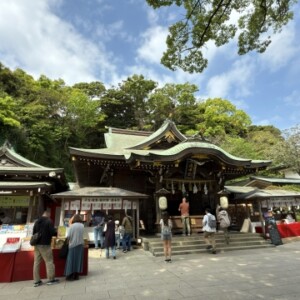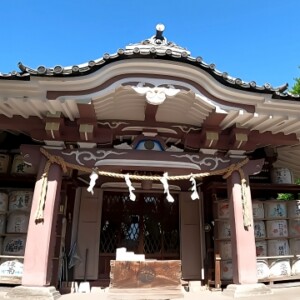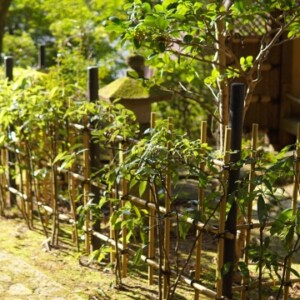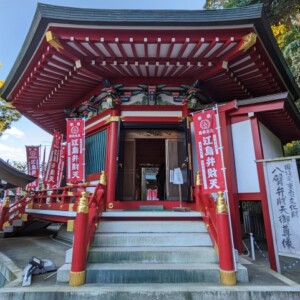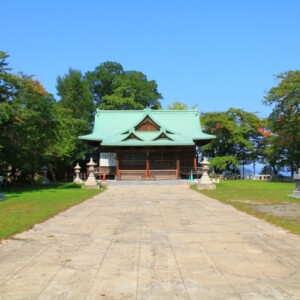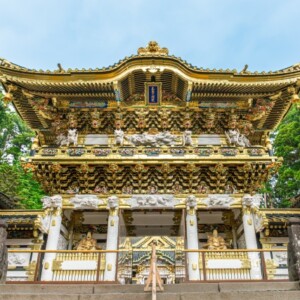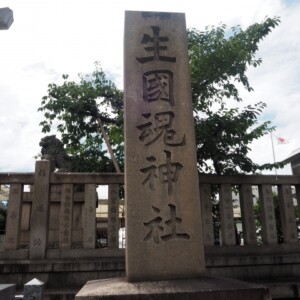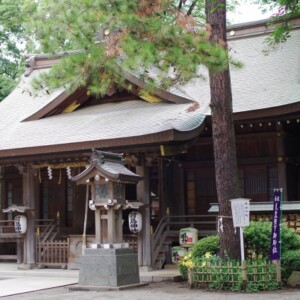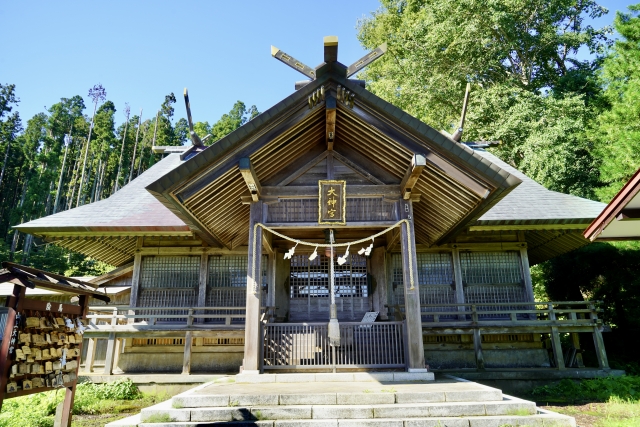
Yamagami Daijingu|Complete guide to the history, highlights, and worship information of this historic shrine
The Yamagami Grand Shrine, standing quietly at the top of Sachiizaka Hill at the foot of Mount Hakodate, is a historic shrine with a long history of 600 years. The shrine is filled with interesting episodes in its history, including the appointment of Takuma Sawabe, a relative of Ryoma Sakamoto, as its chief priest, and its role as the setting for the Hakodate War. The main shrine, Hakodate’s only building designated as a scenic formation, offers a spectacular view of Hakodate Harbor.
Outline and Basic Information on Yamagami Grand Shrine
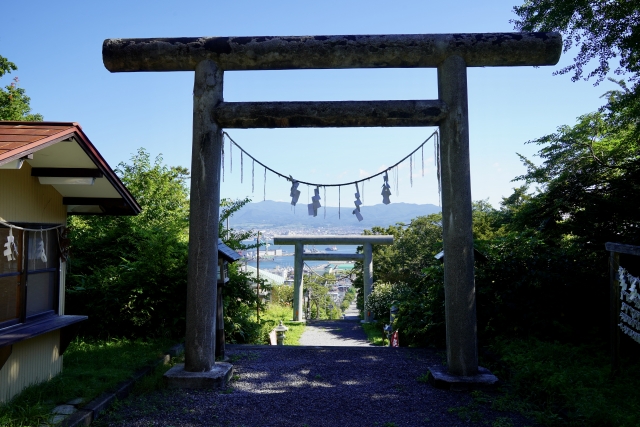
Yamagami Grand Shrine is located in Funami-cho, Hakodate, Hokkaido, and was formerly classified as a township shrine. Located at the northern foot of Mount Hakodate, at the top of the steep slope of Kozaka, the shrine enjoys an excellent location overlooking the Hakodate cityscape and the Tsugaru Straits.
The current shrine pavilion was completed in 1932 and is known for its beautiful copper-plate roofing. It is the only shrine building in Hakodate to be designated as a landscape-forming building, and is highly valued for its historical value and architectural beauty.
History and Origin
According to shrine legend, the founding of Yamagami Grand Shrine dates back to the Oan era (1368-1375), approximately 600 years ago. It is said that an ascetic named Fujibo came to this area, built a hermitage on Shinmeizan (Mt. Shinmei) in Akagawa Village, Kameda, and asked for the spirit of the Ise Jingu Shrine.
Later, in May of the first year of Meireki Era (1655), the shrine was relocated to Shirisawabe Village (present-day Sumiyoshi-cho) and was named “Hakodate Shinmei-gu Shrine. In 1682 (Tennawa 2), the shrine was relocated to the vicinity of the current Yayoi Branch Office of the West Fire Department, and in 1874 (Meiji 7), it was renamed “Yamagami Daijingu” after the name of the place at that time, Yamanoue-cho. In 1876 (9th year of Meiji), the shrine was upgraded to a local shrine.
The shrine experienced repeated relocations, and was temporarily relocated to Sumiyoshi Shrine in Sumiyoshi-cho after being burned down by the Great Hakodate Fire of 1878 and the following year. In September 1882, the shrine was relocated to Funamicho, and in November 1902, it was relocated to its current location and rebuilt.
Gods of worship and benefits
The main deities of the Yamagami Grand Shrine are Amaterasu-Omikami and Toyoke-Omikami. They are also the deities of the Inner and Outer Shrines of Ise Jingu, and are revered as the supreme deities of Japanese mythology and the gods of food and grain.
Another feature of the shrine is that more than 10 deities have been enshrined in the shrine as a result of past mergers of shrines. The shrine also enshrines Sugawara Michizane, known as the god of academic success, and Konohana Sakuyahime-no-mikoto, the god of safe delivery, attracting worshippers seeking a variety of benefits.
These deities are believed to bring a wide range of blessings, including academic success, safe delivery, prosperous business, and protection from bad luck, and are well-liked by local people.
Yamakami Grand Shrine Highlights and Features
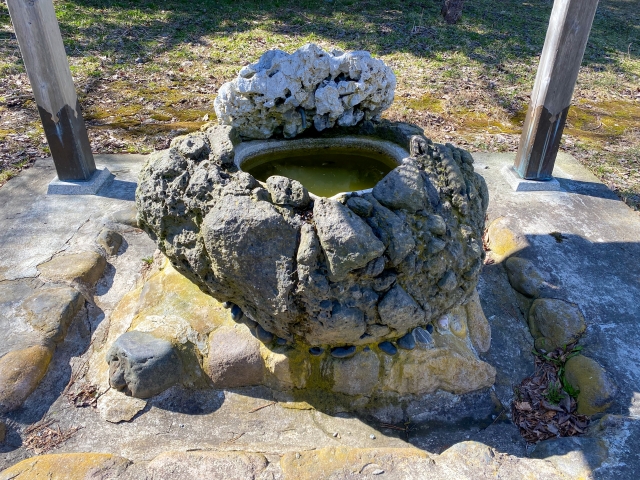
Yamagami Grand Shrine attracts many worshippers with its historical background, beautiful architecture, and spectacular view overlooking the city of Hakodate. The beauty and historical value of the shrine’s architecture and its location surrounded by nature combine to create a unique attraction.
Architectural and Structural Attractiveness
The current shrine pavilion is a beautiful copper-plate-roofed structure whose reconstruction began in June 1930 and was completed in March 1932. It is the only shrine building in Hakodate to be designated as a landscape-forming building, and is officially recognized for its historical value and architectural beauty.
The main hall features traditional shrine architecture and is meticulously decorated in every detail. The copper-plate roofing has turned a beautiful greenish-blue color with age, creating an atmospheric appearance in harmony with the greenery of Mount Hakodate.
The shrine office is also a wooden structure that evokes a sense of history, and its retro atmosphere is familiar to worshippers. The entire precincts of the shrine are surrounded by mountain trees, maintaining a quiet and sacred space in spite of its urban location.
Nature and scenic beauty
One of the most attractive features of the Yamagami Grand Shrine is the spectacular view from its location at the foot of Mount Hakodate. Looking back from the grounds of the shrine, a beautiful view of Hakodate Port and the Tsugaru Straits unfolds beyond the torii gate and the straight slope of Sachiizaka.
Especially in the evening, the golden glow of Hakodate’s cityscape and the sea at sunset is breathtaking. This view is known as one of Hakodate’s best hidden spots and is popular among photographers and tourists alike.
The temple grounds are surrounded by the natural beauty of the mountains, allowing visitors to enjoy the changes of the seasons. Fresh greenery in the spring and autumn colors in the fall adorn the grounds, making it a precious place where visitors can feel the rich nature of Mount Hakodate close at hand.
Historical Episodes and Figures
The Yamagami Grand Shrine has many interesting historical episodes from the end of the Edo period to the Meiji era. The most famous is the story of Takuma Sawabe (formerly Takuma Yamamoto), the 8th head priest of the shrine.
Takuma Sawabe was a samurai from the Tosa Clan and was related to Ryoma Sakamoto and Hanpeita Takeichi. He became a wanderer after the Clock Picking Incident in Edo, and after arriving in Hakodate, he became the chief priest of Shinmei-gu Shrine (present-day Yamagami Daijingu Shrine). He is also known for having assisted Niijima Jo (Niijima Shimeida) in his travels abroad.
In addition, during the Hakodate War, the shrine was used as the seat of the Kuwana domain lord Sadataka Matsudaira, who joined the former shogunate forces led by Takeaki Enomoto. Thus, the Yamagami Grand Shrine played an important role as a stage for the upheavals of the late Edo period and the Meiji Restoration, and is a valuable place that tells a part of Japanese history.
Takuma Sawabe was an interesting figure in religious history as well, as he later became a convert to the Harristian Orthodox Church and became the first Japanese priest of the Japanese Harristian Orthodox Church.
Visiting and Worship Information
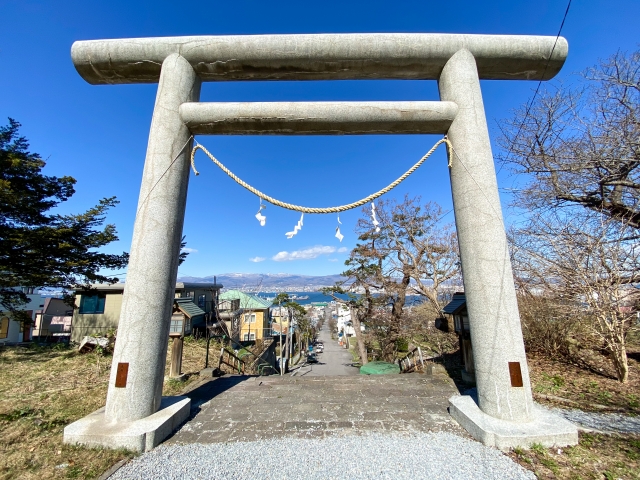
Visiting the Yamagami Grand Shrine is open all year round and is well known by locals and history buffs as one of Hakodate’s hidden gems. Visitors can worship in peace and quiet in this sacred space located at the top of the steep Sachiizaka hill.
Worship Etiquette and Manners
Worship at the Yamagami Grand Shrine is conducted in accordance with general shrine etiquette. When passing through the torii gate, bow and walk away from the center of the path. Purify your hands and mouth at the hand- and mouth-cleansing booth before proceeding to the hall of worship.
When praying, follow the “ni-ai ni clap-toe ichi-ai” manner. After paying money, bow deeply twice, clap twice in front of the chest, and bow deeply at the end. Please be quiet in the temple grounds and remember to be considerate of other visitors.
Kozaka is known as one of the steepest slopes in Hakodate, so it is recommended to wear comfortable walking shoes when visiting the shrine. Also, when enjoying the view from the precincts of the shrine, please take safety precautions to prevent falling.
Annual and Seasonal Events
The annual festival of Yamagami Grand Shrine is held on July 16. On this day, the Matsumae Kagura (Shinto music and dance) is dedicated to the gods, and visitors can see a brave performance of Kagura danced while holding a serious sword and cutting down the shimenawa (sacred rope) on the ceiling. As an important local festival, it attracts many worshippers.
The shrine is also crowded with visitors on New Year’s Day, and prayers are offered for success in school and for safe delivery. Various prayers are accepted throughout the four seasons, and visitors can contact the shrine in advance to discuss any life milestones or wishes they may have.
Visitors can also enjoy the seasonal changes in nature, with fresh greenery in spring, lush greenery in summer, autumn leaves in fall, and snowy landscapes in winter, all set against the rich natural backdrop of Mount Hakodate.
Red Seal and Charm Information
The Yamagami Grand Shrine offers red seals, which are available from 9:00 a.m. to 5:00 p.m. Red seals are available at all times and are popular among visitors for their careful writing.
The red seal of Sumimikichi Shrine, which also serves as a concurrent shrine, is also accepted at this location. This is convenient for those who wish to visit the shrine efficiently because they can receive red seals from both shrines at the same time.
A variety of good luck charms and lucky charms are also available, and are awarded according to your wishes for academic success, safe delivery, traffic safety, and so on. For more detailed information, please ask at the shrine office during your visit.
Access and Usage Information
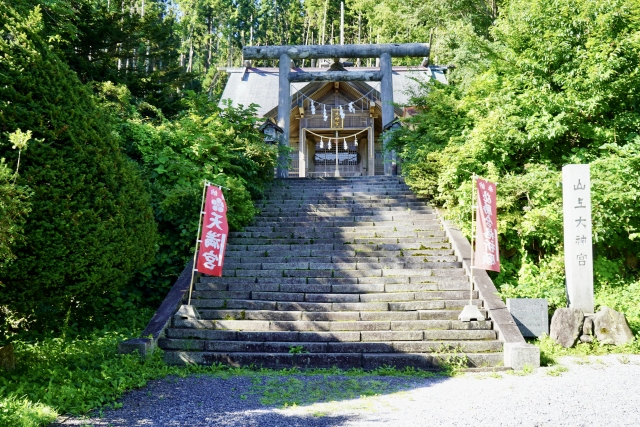
Yamagami Grand Shrine is located at the top of Kozaka, at the foot of Mount Hakodate, and is accessible from downtown Hakodate. However, please keep in mind that Saiyosaka is known as one of the steepest slopes in Hakodate and requires some physical strength to visit the shrine.
Access
The nearest streetcar stop is Hakodate-dock-mae Station, a 15-minute walk from the station. From the station, head toward Kozaka, and the shrine is located at the end of a steep slope. The slope becomes steep, especially near the former Russian Consulate, and the final section is quite steep.
The shrine can be accessed by bus, but even from the nearest bus stop, it is necessary to walk uphill. If you take a cab, it is possible to go up to the front of the shrine, but be careful because the road is narrow.
Hakodate Station is approximately 15 minutes away by car. However, Kozaka has sections that are one-way and the road is narrow, so care must be taken when driving. Those who are not physically fit are advised to take a cab.
Hours of Admission, Fees, and Parking Information
The grounds of the Yamagami Grand Shrine are basically open all day, and no special fees are required to visit the shrine. The red seal service is available from 9:00 a.m. to 5:00 p.m.
As for parking, public transportation is recommended when visiting the shrine, as there is no dedicated parking lot for the shrine. Parking spaces are also limited in the surrounding area, and given the gradient of Sachiizaka, care should be taken when accessing the shrine by car.
Inquiries can be made by calling 0138-22-1819. It is recommended that you contact them in advance to confirm detailed information regarding visitation and prayers.
<Address> 15-1 Funami-cho, Hakodate, Hokkaido 040-0055, Japan
Reference site
Hakobohra (Official tourist information of Hakodate City): https: //www.hakobura.jp/spots/644
Hakodate Minami Hokkaido Tourist Guide: https://hakodate-kankou.com/spot/10687/
Hokkaido Jinja Agency: https://hokkaidojinjacho.jp/山上大神宮



